The Best Clamp Meters — Buyers Guide, Review, and Comparison
Clamp Multimeter Categories
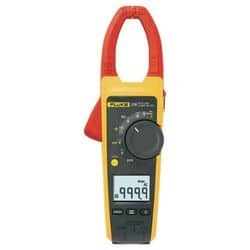
Fluke Clamp Meters
Fluke Clamp Meters are the choice of the discerning pro-contractor. Based in the USA, and with an electrical testing history encompassing 70 years, the brand’s machines are respected for their accuracy, durability, and ease of use. Project-specific, its tools are suitable for domestic through to industrial and mains utility applications.
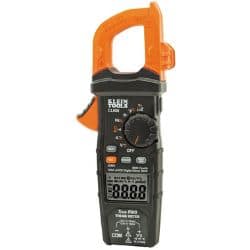
Klein Tools Clamp Meters
Klein Clamp Meters deliver an impressive combination of affordability and high-performance circuit testing. With a history of electrical and telecommunication know-how stretching back over 160 years, the Klein brand is renowned for its manufacture of reliable testers for beginners, serious DIYers, and trade professional applications.
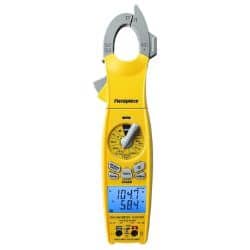
Fieldpiece Clamp Meters
Known as the HVACR circuit testing experts — Fieldpiece clamp meters are the choice of the dedicated air-con and heating engineer. Trade-focused, and with a 30-year history of innovation, its machines offer job-specific capabilities such as microamp readouts, in-rush current detection, low-pass filters, and dual temp investigation. While over-specced for the general electrician or home user — it’s the go-to brand for hot and cold system pros.
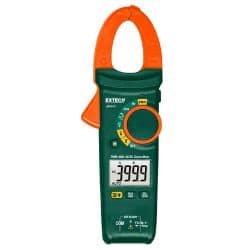
Under $100 Clamp Meters
Delivering safe and versatile operation, the ultimate clamp meters under 100 dollars are ideal for the DIYer and light contractor. While easy on your pocket, these machines still offer up to CAT IV safety ratings, temperature testing, auto-ranging, and TRMS technology. And, with many units incorporating non-contact voltage detection — and fuss-free, uncomplicated operation — they are suitable for the novice clamp meter user.
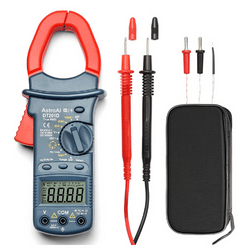
Under $50 Clamp Meters
With many machines offering comparative capabilities to their pricier counterparts — the best clamp meters under 50 dollars are worthy of consideration for the light project contractor and home DIYer. Although budget-focused, they still offer impressive functionality, including memory recall, True RMS tech, auto-ranging, and temperature testing. Furthermore, with CAT III ratings, auto-shutoff, and non-contact voltage detection — they deliver reassuring safety for the novice operative.
Clamp Meter Top Picks In Each Category
| IMAGE | PRODUCT | DETAILS | ||
|---|---|---|---|---|
|
Best Fluke Clamp Meter 
|
Best Fluke Clamp Meter
|
Fluke 376
|
Features
|
Check Price at Amazon Review Fluke 376 Review Fluke 376Z Review |
|
Best Klein Tools Clamp Meter 
|
Best Klein Tools Clamp Meter
|
Klein CL800
|
Features
|
Check Price at Amazon Klein CL800 Review Klein CL800 Review |
|
Best Fieldpiece Clamp Meter 
|
Best Fieldpiece Clamp Meter
|
Fieldpiece SC680
|
Features
|
Check Price at Amazon Fieldpiece SC680 Review Fieldpiece SC680 Review |
|
Best Clamp Meter Under $100 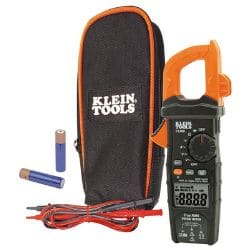
|
Best Clamp Meter Under $100
|
Klein CL600
|
Features
|
Check Price at Amazon Review Klein CL600 Review Klein CL600 Review |
|
Best Clamp Meter Under $50 
|
Best Clamp Meter Under $50
|
AstroAI DT201D
|
Features
|
Check Price at Amazon AstroAI DT201D Review AstroAI DT201D Review |
The Best Clamp Meters — Buyer’s Guide
Considered the masters of electrical testing, the best clamp meters deliver incomparable functionality for the enthusiastic DIYer and trade contractor.
Taking multimeter capabilities to the extreme, these versatile units vary in features, price, safety rating, and project suitability — meaning there’s a tool for every level of experience and job intensity.
Look upon this article as your clamp meter bible — exposing the secrets behind these testers, and giving you all the knowledge you require to make an informed choice.
What Is a Clamp Meter?
In short, it’s the mother-of-all electrical scrutiny tools.
Essentially, the clamp meter — also known as a current probe, current clamp, amp clamp, and tong tester — is a multimeter multiplied by infinity, covered in chocolate, showered with sprinkles, and with a cherry placed on top.
The main difference from their basic cousins is that they, perhaps unsurprisingly, feature top-mounted jaws (the clamp). Positioning this around cables, components, or conductors — you can test current levels without having to expose bare wires or disengage power flow.
Furthermore, with the attachment of probe cables and thermo relays — you can fulfill voltage, resistance, and temperature testing scrutiny concomitant to a multimeter.
How Does a Clamp Meter Work?
While straightforward to use — even for the electrical novice — their operational process is seriously complex.
In extremely basic terms, the jaws contain wire coils that, when placed around a live cable, experience magnetic induction. This energy is passed through to an internal pathway of diodes, capacitors, and microchips that relay the information in digital form onto the display screen. Thus giving the current reading.
If you’re technically minded and love getting down and dirty with physics — check out this scientific article on the technicalities behind clamp meters.
Typical Features of a Clamp Meter
While their particular functions vary across models and manufacturers — explored below in How to Choose the Best Clamp Meter — these machines share the common features of:
- Molded sensor jaws — wire diameter capability varies.
- Trigger to operate the clamp.
- Insulated casing.
- Thumb-operated dial/rotary switch — to select scrutiny function.
- Readout display.
- Input jacks — to attach probes.
Uses for a Clamp Meter
If your projects involve electrical testing, there’s little the clamping meter cannot do. These flexible machines have the ability to investigate:
- Current.
- Voltage.
- Resistance.
- Temperature.
- Capacitance.
- Continuity.
- Wavelength.
- Frequency.
This means you can utilize these units for:
- Troubleshooting.
- Repair.
- Maintenance.
- Measuring efficiency.
- Circuit building.
If you’re new to electrical circuit testing with a clamp meter — take a look at my complete guide to using one of these versatile machines.
Multimeter vs Clamp Meters
Deciding between beer or wine, Democrat or Republican, and Apple or Android are challenges we all face — and you can add to this list of quandaries, multimeter or clamp meter.
While extremely similar machines, it’s important that you make the correct decision.
Think of it like this.
A multimeter is a voltage tester that dabbles in current scrutiny, a clamp meter is a current checker that can analyze voltage.
If your projects are mainly electronic-based (think laptops, cell phones, and tablets) — opt for a multimeter. Able to measure in milliohms, milliamps, and millivolts — they’re better suited to the low-level currents, voltages, and resistance inherent to microchip-based machines.
Conversely, if your DIY jobs or trade work involves electricals (mains wiring, utilities, HVACR, industrial three-phase, and automotive), go for a clamp meter. Their ability to test high-energy amperage makes them undoubtedly superior to multimeters.
However, life is never that straightforward.
There is increasingly a significant amount of cross-over between these two electrical testing formats. Some models of multimeter can accommodate a plug-in clamp to cope with hefty current, and many high-end clamp meters offer milli-unit capabilities.
Where functionality and project requirements are similar — the decision needs to be made on practicality. And, my young electrical testing Padawan, the go-to unit is the clamp meter.
There are two main reasons.
Firstly, assuming your chosen clamp meter and multimeter can measure identical current — the clamp meter can fulfill this scrutiny without having to expose any bare wires. The jaws of the clamper permit you to analyze the electricals without breaking the circuit.
Secondly, multimeters use probes to measure both voltage and current — meaning you can’t check both volts and amps simultaneously (unless you run two multimeters). The probes and jaws incorporated into the clamp allow for this synchronous testing.
How to Choose the Best Clamp Meter
Hence, I’ve put together below the factors that I believe are crucial when deciding between clamp multimeters — based on personal preferences, the scrutiny demands of your project, and the current and voltage loads present in your circuit.
CAT Safety Certification
In my view, the most important consideration — as it could be a lifesaver.
The CAT rating indicates the energy loads that the unit can safely deal with. Therefore, you need to ensure that the certification of your clamp multimeter is equal to, or exceeds, the rating of your circuit.
For a detailed explanation of these metrics, check out my What Are CAT Safety Ratings article. However, in brief, this is what they denote:
CAT I — Handheld and portable electronics like tablets, wi-fi boxes, and cell phones.
CAT II — Mains-powered machines such as televisions and hammer drills.
CAT III — Three-phase circuitry, for example, warehouse lighting.
CAT IV — High-energy loads, such as overhead pylon wires and transformer boxes.
Generally speaking, the higher the CAT rating, the more expensive the machine. For example, you can’t get your hands on a sub-$50 clamp meter rated for CAT IV applications.
Clamp Digital Meter Brand
The clamp meter market is dominated by three electrical testing specialist brands — Fieldpiece, Klein Tools, and the mighty Fluke. As experts in circuitry tools, they are the go-to manufacturers for serious DIYers and trade pros.
While it’s not crucial that you go for one of the big boy maker machines, choosing a respected marque can bring the advantages of:
Extensive customer support.
Backed by decades of clamp meter experience.
Impressive warranties.
Durable and robust machines.
Access to replacement parts.
Assurance of safety.
Clamp meters that are tested in the field.
However, the downside is, these premium brands typically arrive with concomitant premium prices. Hence, if you’re unconcerned about the make as a status symbol and are planning on relatively light-to-medium use — consider a slightly less famous manufacturer.
There are some excellent less well-known clamp meter brands, such as AstroAI and Extech, that offer high-end functionality but without the elevated price point. To check out the best budget machines, take a look at my best under $50 and under $100 picks.
TRMS Technology
Digital clamp meters come with two levels of accuracy — the standard RMS (root mean square) and the more precise TRMS (true root mean square).
The question is, how exact do you need your testing machine to be?
If you’re planning on doing little more than testing battery cell power, scrutinizing diodes, or checking for continuity — RMS is sufficient. But if your projects require enhanced accuracy — for example, troubleshooting PCBs and analyzing capacitors — go for a TRMS unit.
In basic terms, the difference arises in how readings are calculated. RMS units only check peak readings, while TRMS testers take into account the whole range of wave fluctuations.
To learn more about this technology, and what it means for your voltage and current clamp meter — check out my explanatory guide.
Auto-Ranging
An auto-ranging feature permits your electrical tester to intuitively decide the optimum readout display range — in tens, hundredths, or thousandths. For non-specialists and novice clamp meter operatives, this is invaluable — meaning you require no prior knowledge of current, voltage, and resistance metrics to operate the unit.
Furthermore, even for the pros — it’s a worthy consideration. Preventing you from manually switching and fiddling with dials and buttons to select the correct range — you can save valuable time and complete your project more efficiently.
Admittedly, auto-ranging machines tend to be a few dollars more than meters without this tech system — but for the convenience and practicality they offer, I suggest they are worthwhile.
Non-Contact Voltage (NCV) Detector
Just place the jaws of the clamp meter near your wires or components of interest — and should electrical flow be found, the machine will provide both an audible and visual warning.
Testing Capabilities
Digital clamping meters vary in their scrutiny capabilities, with more functions unsurprisingly adding extra dollars to the price. I suggest that for the average home user, being able to examine voltage, current, and continuity will be sufficient. And, for more experienced operatives or light contractors — look for a machine with the additional capabilities of frequency, wavelength, resistance, and capacitance.
But, if you’re a trade pro or serious hobbyist, you need to seek out a tool with additional testing functions. While not exclusive, these can include:
- Temperature — especially for HVAC and automotive work.
- Low-impedance — to eliminate ghost voltages.
- Micro-amps — to scrutinize flame sensors.
- Low-pass filter — for VFD (variable frequency drive motors).
- Bluetooth — to connect to apps and scrutiny tools.
- In-rush current — to troubleshoot start-up motor amperage.
Clamp Size and Type
Head clamps vary in dimensions across models — your main consideration should be the mass of the wires and components you’re investigating. In most circumstances, manufacturers provide jaw specifications in diameter-inches — that is, the maximum cross-section of an electrical that the jaws can surround. A 1.38-inch clamp is sufficient for the majority of home and trade applications.
What’s more, some high-end manufacturers — specifically the testing maestros Fluke — offer project-specific heads away from the straightforward jaw norm (the fixed clamp).
These can include removable heads, allowing you to separate the jaws from the main unit body and access tight-space locations — and flexible cables that permit you to surround immense or awkwardly shaped components, and wiring looms with a virtual clamp lasso.
Clamp Meter Safety
Electricity can be dangerous. Sure, as soon as you unbox your shiny new clamp meter, you’ll be eager to thrust the probes into a live socket. But be careful! Make a mistake, and it might be the last DIY or trade tool you purchase.
Before using any machine — and especially multi and clamp meters — always read the manufacturer’s instructions for use.
Additionally, here are my top tips for hazard-free circuit testing with a clamp meter:
- Before operation, check the machine. Look for cracks in the casing or damaged probes or clamp heads. If it looks dodgy, don’t use it!
- Ensure the connectors have their insulating sheaths.
- Use only the battery recommended by the manufacturer.
- Keep your clamp meter well maintained.
- Always connect the common probe before the live.
- When disconnecting probes, remove the live one first.
- Replace batteries as soon as the low-power sign is illuminated.
- Do not use in wet, moist, or seriously humid conditions.
- Don’t operate the clamp meter in explosive gas environments.
- Never test circuits above the CAT rating of your machine.
- Don’t put your tongue on live circuits.
Conclusion
For the ultimate in electrical circuitry testing capabilities — you need a clamp meter.
Able to test a plethora of wire and component metrics — in many cases without having to expose bare wires or deactivate the power — these incredibly versatile machines can be utilized by the novice user as well as the trade pro.
First and foremost, decide on the CAT certification you need for your projects. Then consider the brand, TRMS, auto-ranging, and the investigative functions you and your jobs require.
Admittedly, low-frequency users and those specifically looking at microelectronics may be better off opting for a multimeter instead. However, for hardcore electrical mains wiring work — nothing can compare to the extreme abilities of digital clamp meters.
Digital Clamping Meters FAQs
Q: What Is the Best Clamp Meter?
In my opinion, the ultimate clamp digital meter on the market is the Fluke 376. This impressive CAT IV-rated machine boasts a flexible current probe, inrush current system, and a low-pass filter.
Q: What’s the Difference Between Clamp Meters and Multimeters?
Although sharing many capabilities, multimeters are traditionally used for electronic testing, while clamping meters are utilized for electrical mains systems.
Q: Are Cheap Clamp Meters Accurate?
Yes! As long as you choose wisely, you can get your hands on an affordable, versatile, and precise clamp meter without spending the high-end price commanded by premium brands. Check out my guides to the best sub-$50 and sub-$100 units.
Q: What Is a True RMS Clamp Meter?
Standing for True Root Mean Square, a genuine TRMS clamping digital meter checks the fluctuations in non-sinusoidal waves — while an RMS machine only examines perfect peak readings of sinusoidal waves.
In real terms, that means that a TRMS clamper is more accurate than an RMS tool. For more info, check out my complete guide here.
Q: What Is Ammeter Clamp?
Also known as a clamp meter, current probe, tong tester, and current clamp — an ammeter clamp is an electrical scrutiny tool that incorporates head jaws to surround the wires of components of interest.
Q: Why Are Fluke Multimeters So Expensive?
The leading brand of clamp and multimeters, Fluke units tend to be harder on the pocket than other machines. The reasons include their incomparable accuracy, lifetime warranty, and robust build.
For a more in-depth guide to the cost/benefits of these units, check out this video:

